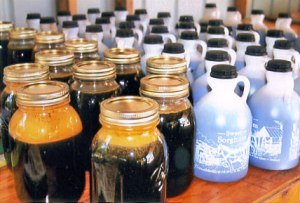Sorghum is a tropical grass native to Africa. It first came to the Americas with imported slaves. Sorghum resembles corn in many of its characteristics and in the manner it is grown. Sorgo, the term used for sweet sorghum, is only one of several types of sorghum. The sorghum family includes grain sorghums, such as ‘milo’ and ‘hegari’; forages, like ‘sudangrass’ and ‘kafir’; ‘broomcorn’; and ‘Johnsongrass,’ a perennial sorghum.
Also called cane, sorgo is distinguished by the abundance of sweet juice in the stems and typically tall height. Sorgo cane should not be confused with sugarcane, another tropical grass from which a sweet syrup can be made. Several sweet sorghum varieties are currently available. All are open-pollinated or nonhybrid.
They can be divided into traditional and improved categories. Sorghum is drought tolerant, particularly when compared to corn. Yield and syrup quality of any sweet sorghum variety will suffer under a drought, although tolerance will vary.
Traditional varieties have been cultivated for generations and are still grown, almost religiously, by some farmers. When compared to improved types, growing sorghum of older varieties are more prone to lodging and disease. Yields are also lower. High syrup quality, whether real or perceived, is the main reason they are grown. One value of traditional varieties may be in specialty marketing where gourmet tastes are targeted
Read on: Learn About Growing Sorghum: A Natural Sweetener – Sustainable Farming – MOTHER EARTH NEWS.


